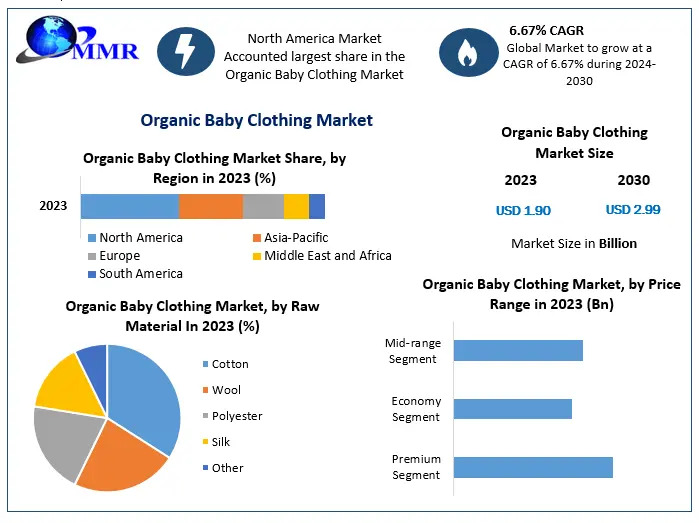Sales enablement and marketing: How to support your reps with data
As a marketer, you know getting customers' attention can be tough, but actually closing those customers is just as much of a struggle for sales reps in your org.
That's because the average sales process is more complex than ever. With so many opportunities for leads today to lose interest or potentially bounce to a competitor, reps need all the help they can get to make meaningful impressions on their customers.
And that's where marketers can save the day.
By finding the link between sales enablement and marketing, you can support your business' sales efforts and make your role as a marketer even more valuable to your business.
What is sales enablement, anyway?
Let's kick things off with a quick definition.
Sales enablement is the act of empowering sales reps to close more deals through the help of employees outside of the sales team. In the context of marketing and sales enablement, this support comes in the form of marketing content, data and insights from customer interactions.
Again, the average B2B buyer's journey is growing longer. Prospects and leads alike are interacting with more and more people on the path to purchase. Many of these touchpoints happen among marketers, especially as people get acquainted with your brand for the first time.
Social media posts. Landing pages. Blog posts. The list goes on.
Your marketing team is sitting on a potential goldmine of data when it comes to what customers want. The problem is that it's easy for that ever-so-valuable data to get siloed.
Food for thought: a staggering 87% of sales and marketing leaders say that alignment between both teams is critical to business growth. Supporting your reps with data and sales enablement content not only makes your reps' lives easier but also boosts your company's bottom line.
Making the link between sales enablement and marketing
The good news is that you're probably already taking action to boost your business' sales initiatives.
Here are some examples of how sales enablement and marketing can collaborate so you can better translate support into action.
Creating sales enablement content that educates your leads
This is perhaps the most straightforward way marketing and sales can work together.
Educational content is crucial for both gathering leads and nurturing them. Some examples of sales enablement content that's prime for social media include:
Blog postsHow-to videosCase studiesCustomer reviews and testimonialsE-books, webinars and other lead magnetsTop-of-the-funnel content published to social media allows you to introduce customers to your business and put them on the path toward becoming qualified leads.
For example, free downloadables are perfect for funneling social traffic to your business' landing pages and encouraging opt-ins to eventually be handed off to sales'
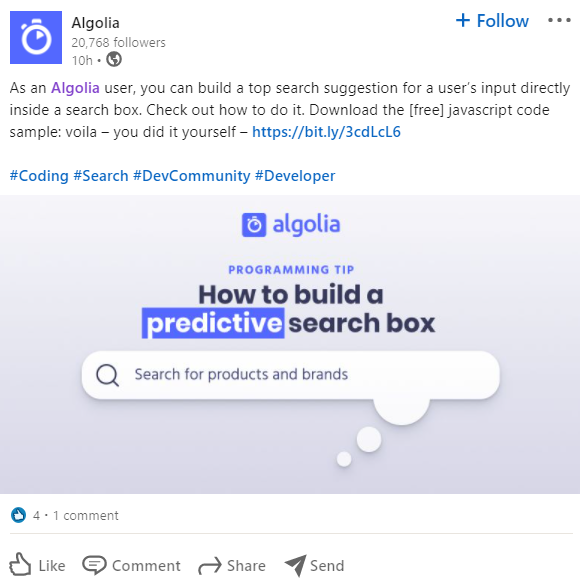
'meanwhile, testimonials from customers serve to nurture existing followers that might be on the fence.
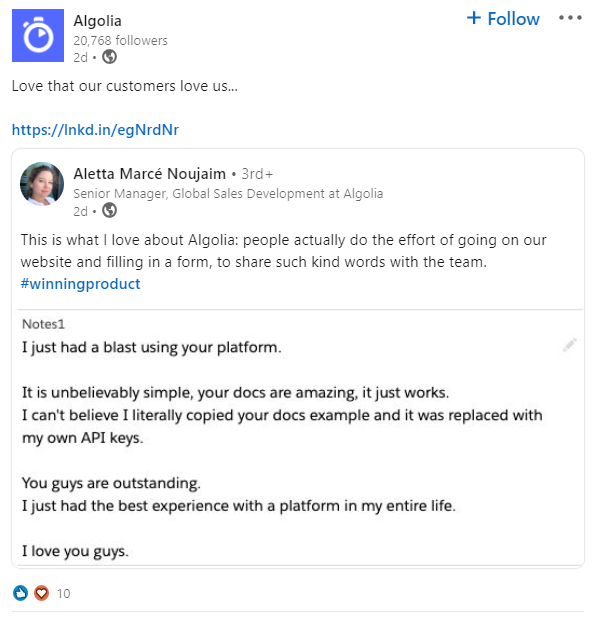
These pieces of content not only fill out your social media calendar but also give sales reps helpful resources to hand over to leads. For example, a rep might advise a lead to check out a blog post about a particular product feature or case study about a similar customer.
In short, creating sales enablement content is a win-win for both teams. Over time, you can hash out which type of content performs best for attracting and closing leads from social and strive to publish more of it.
Identifying qualified leads and getting them to your sales team
No surprises here!
Leads can be gathered and qualified directly through interactions that they have on the marketing side. This might include:
Downloading an e-bookAttending a webinarAsking questions about products or reaching out via social mediaRepeatedly visiting your website or interacting with your social adsKeep in mind that taking one of the actions above does not necessarily make someone sales-ready. In fact, it's a common misconception that a specific click or download means that a lead is ready to buy.
For example, someone that DMs you on Twitter to ask about pricing to speak to someone from sales is more qualified than, say, someone that downloaded an e-book on a whim.
Defining what makes a lead 'qualified' varies from business to business. This speaks to the importance of communication for successful sales enablement, ensuring that both teams are on the same page.
Understanding customer sentiment
Although sales reps might have a more direct relationship with leads, marketers today are in a unique position to learn what customers are thinking.
For example, social media is one of the best places to conduct market research to support your sales team. That's because social media is totally transparent as customers sound off on brands and what they like (or dislike) about any given product.
In fact, in our recent survey of 250 business executives, 60% identified investing more resources into social media as a key way to gain a competitive advantage.
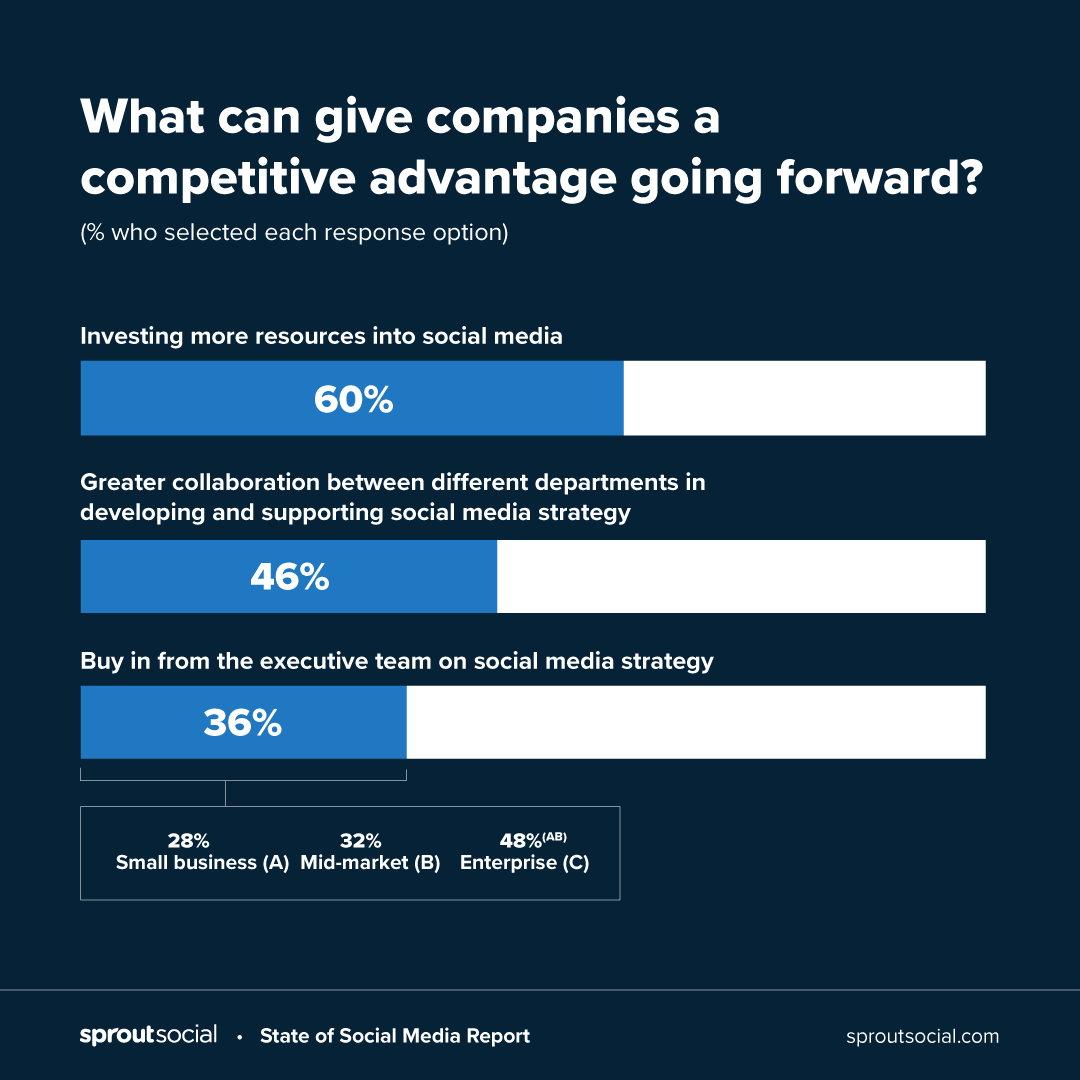
Through sentiment analysis, you can get into your audience's headspace to understand what they're feeling and how reps should approach them. Below is an example of sentiment analysis conducted in Sprout:
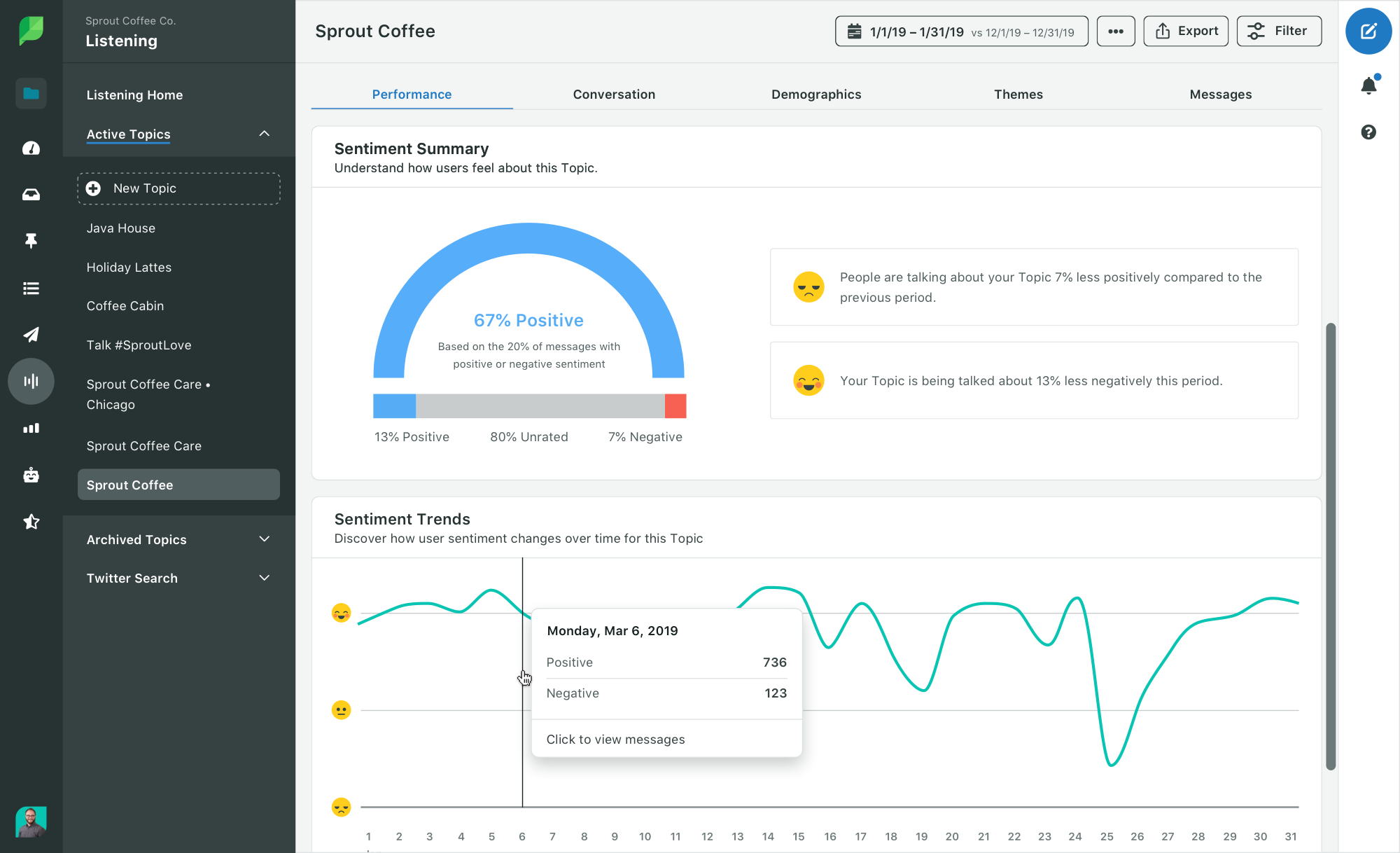
Identifying the most effective marketing channels
Leads can come from seemingly anywhere and everywhere these days.
From social media and emails to SEO and beyond, you should have a pulse on which channels perform the most in regard to sales.
For example, which types of leads convert the best? Where are most of your leads coming from? How long does it take for a social lead to close versus someone from search?
If you're tracking your customers in a CRM such as HubSpot or Salesforce (see below), you can more easily track where folks are coming from and how they behave once they engage with your business.
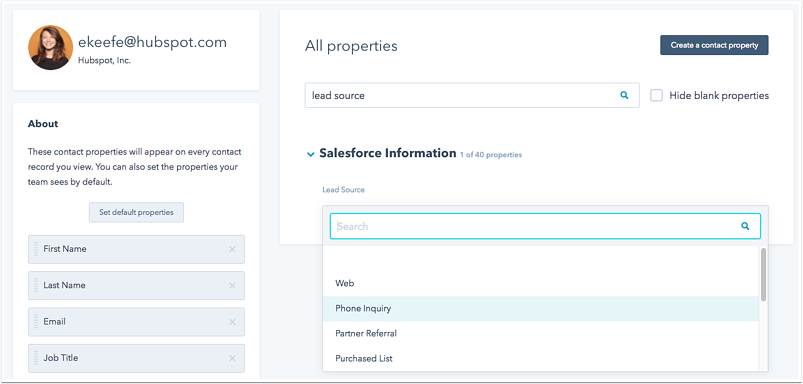
These attribution insights empower you to spend your time and resources on channels that make sense, boosting your marketing and sales enablement efforts alike.
Digging into pain points and sales objections
Through social media, marketers can see directly why customers decide to make a purchase or choose a particular brand.
This applies on both a big-picture and individual level. If people are complaining about certain aspects of your or a competitors' product, you should absolutely take note of those issues.
Lately I’ve been using @otter_ai a lot for listening to podcasts.
The rolling transcriptions are great, but more importantly, the ability to highlight text and add notes is a game changer for me. @AirrAudio does notes, but the UX has friction.
I wish @OvercastFM had this.
— Amit Jotwani (@amit) March 25, 2021

Strengthening the alignment between Sales enablement and marketing with data-driven insights fosters a more cohesive approach to supporting representatives, ultimately propelling sales performance.
A well-executed Sales Enables SEO"/>
Machine-learning analytics empowering sales enablement and marketing collaboration can significantly boost the data insights provided to even novice reps, transforming them into more informed decision makers who outperform competitors.
The converging efforts of sales enablement and marketing, backed by data-driven insights to empower reps with actionable knowledge—unlocks a gamechanger for achieving success in modern business markets.
The effective synthesis of sales enablement and data-driven marketing strategies underscores the power they have in empowering reps with meaningful insights. It'll elevate your team beyond traditional metrics, fostering a more agile approach that propels growth efficiently.
Sales enablement and marketing, when nurtured with a data-driven approach to support their reps' efforts effectively crescendo the potential for unprecedented cooperation; henceforth solidifying success by bolstering weaponized insights.
Effective sales enablement strategies, when coupled with robust marketing analytics and data-driven support for reps' activities in the field or virtual environment are pivotal to boosting performance outcomes.






